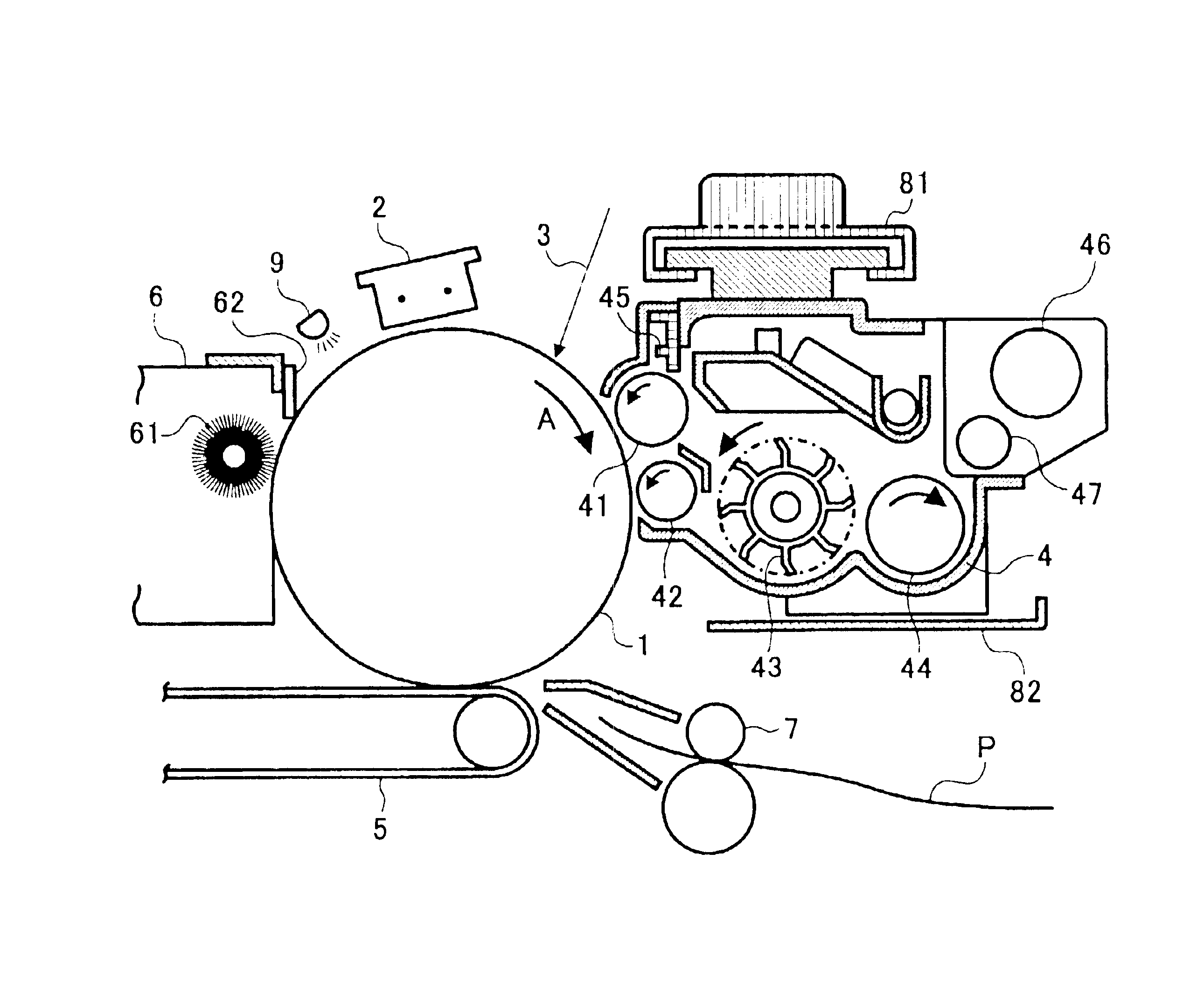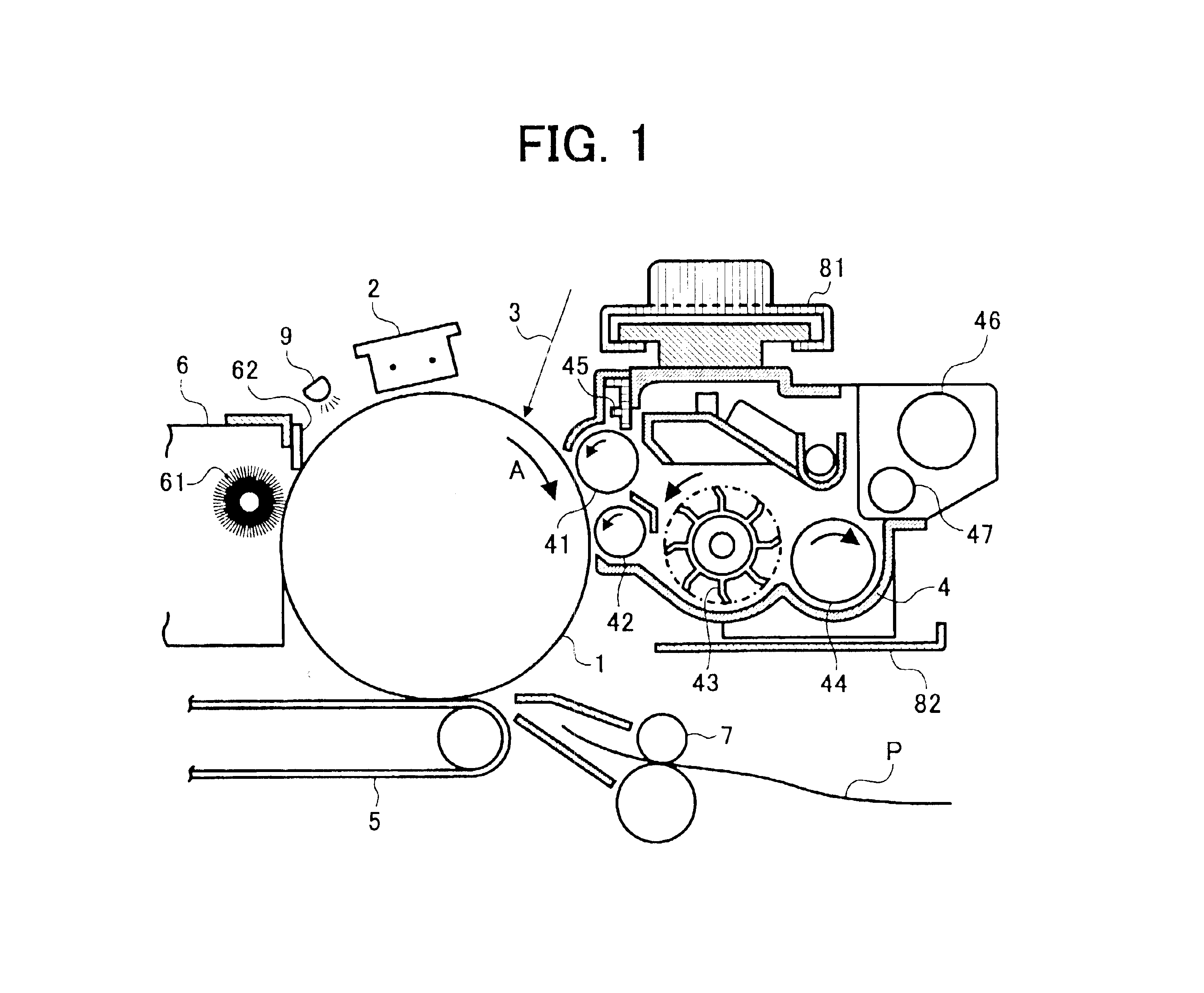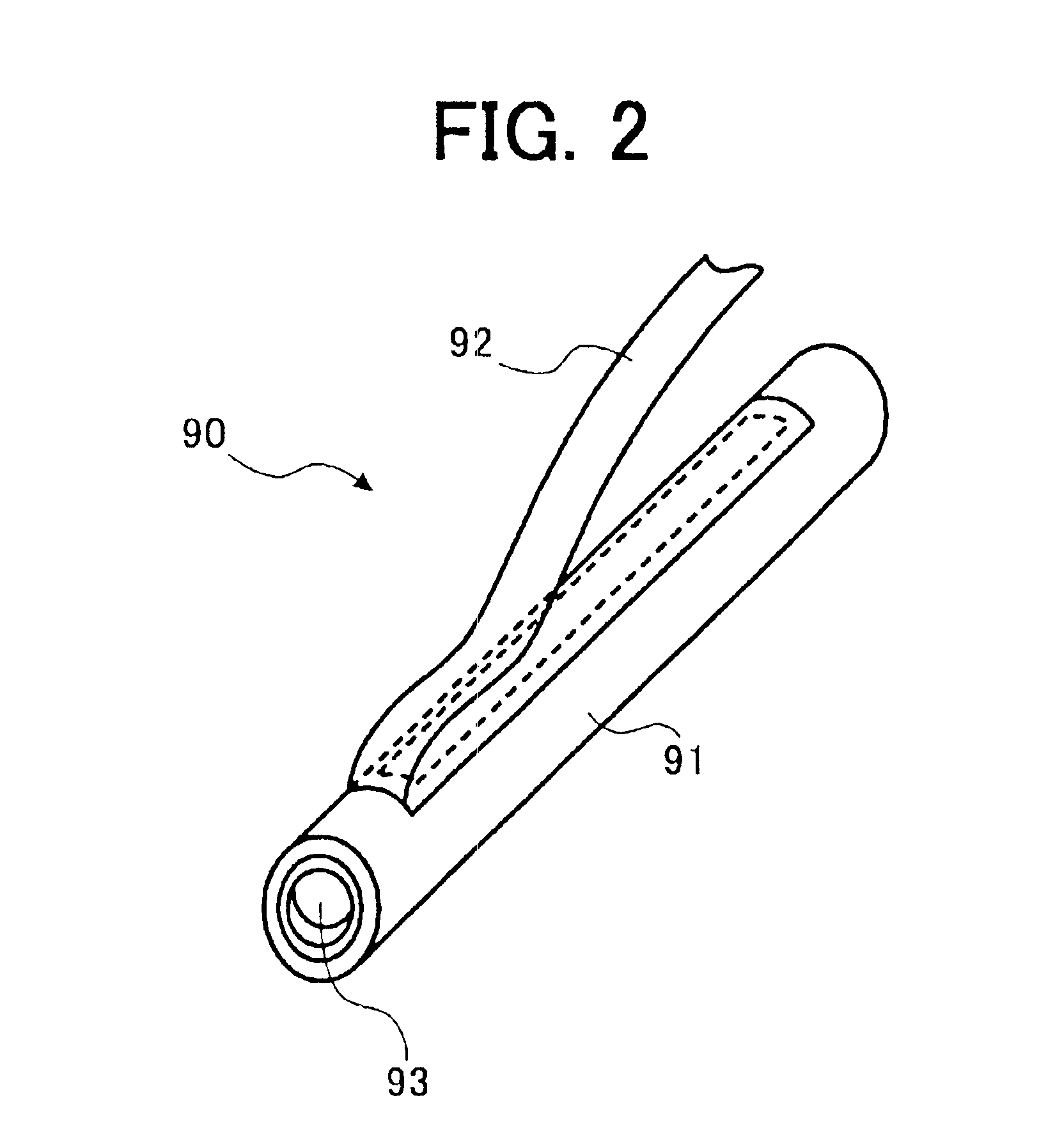Toner for developing electrostatic image, method for manufacturing the toner, developer including the toner, container containing the toner, and developing method using the toner
a technology for developing electrostatic images and toners, which is applied in the direction of electrographic processes, electrographic processes using charge patterns, instruments, etc., can solve the problems of inability to uniformly disperse colorants and charge controlling agents in thermoplastic resins, low toner yield in the classification process, and limited materials that can be used as toner constituents, etc., to achieve good combination of fine dot reproducibility, low temperature fixability, and offset resistance
- Summary
- Abstract
- Description
- Claims
- Application Information
AI Technical Summary
Benefits of technology
Problems solved by technology
Method used
Image
Examples
manufacturing example 1
In a reaction container equipped with a stirrer and a thermometer, 683 parts of water, 11 parts of a sodium salt of sulfate of an adduct of methacrylic acid with ethyleneoxide (EREMINOR RS-30 from Sanyo Chemical Industries Ltd.), 83 parts of styrene, 83 parts of methacrylic acid, 110 parts of butyl acrylate, and 1 part of ammonium persulfate were added and the mixture was agitated for 15 minutes at a revolution of 400 rpm. As a result, a white emulsion was obtained. Then the emulsion was heated to 75° C. to perform a reaction for 5 hours. Then 30 parts of a 1% aqueous solution of ammoniumpersulfate were added to the emulsion and the mixture was further aged for 5 hours at 75° C. Thus, an aqueous dispersion (particle dispersion 1) of a vinyl resin (i.e., a copolymer of styrene-methacrylic acid-butyl methacrylate-a sodium salt of a sulfate of an adduct of methacrylic acid with ethyleneoxide) was prepared. The volume average particle diameter of the particle dispersion 1 was 0.10 μm wh...
manufacturing example 2
Eighty (80) parts of the particle dispersion 1 were mixed with 990 parts of water, 40 parts of a 48.5% aqueous solution of sodium dodecyldiphenyletherdisulfonate (EREMINOR MON-7 from Sanyo Chemical Industries, Ltd.), and 90 parts of ethyl acetate. Thus, an oil phase 1 was prepared.
Synthesis of Low Molecular Weight Polyester
manufacturing example 3
In a reaction container equipped with a condenser, a stirrer and a pipe from which a nitrogen gas was supplied to the container, 220 parts of an adduct of bisphenol A with 2 moles of ethyleneoxide, 561 parts of an adduct of bisphenol A with 3 moles of propyleneoxide, 218 parts of terephthalic acid, 48 parts of adipic acid, and 2 parts of dibutyl tin oxide were mixed. Then the mixture was reacted for 8 hours at 230° C. under a normal pressure. Then the reaction was further performed for 5 hours under a reduced pressure of from 10 to 15 mmHg. In addition, 45 parts of trimellitic anhydride were added thereto and the mixture was reacted for 2 hours at 180° C. under a normal pressure. Thus, a low molecular weight polyester 1 was prepared. The low molecular weight polyester 1 had a number average molecular weight of 2500, a weight average molecular weight of 6700, a glass transition temperature of 43° C. and an acid value of 25.
Preparation of Prepolymer
PUM
| Property | Measurement | Unit |
|---|---|---|
| glass transition temperature | aaaaa | aaaaa |
| glass transition temperature | aaaaa | aaaaa |
| acid value | aaaaa | aaaaa |
Abstract
Description
Claims
Application Information
 Login to View More
Login to View More - R&D
- Intellectual Property
- Life Sciences
- Materials
- Tech Scout
- Unparalleled Data Quality
- Higher Quality Content
- 60% Fewer Hallucinations
Browse by: Latest US Patents, China's latest patents, Technical Efficacy Thesaurus, Application Domain, Technology Topic, Popular Technical Reports.
© 2025 PatSnap. All rights reserved.Legal|Privacy policy|Modern Slavery Act Transparency Statement|Sitemap|About US| Contact US: help@patsnap.com



